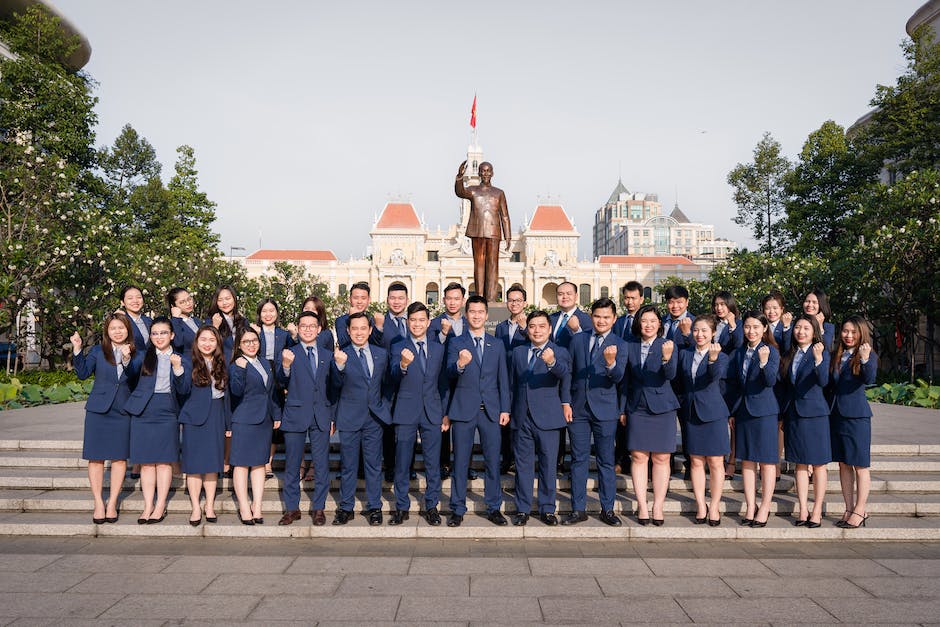Table of Contents
- Introduction
- The Evolution of Ford Motor Company: A Succession Story
- Sustainable Practices in the Automotive Industry: Ford Motor Company’s Approach
- The Role of Leadership in Ensuring Succession and Sustainability at Ford Motor Company
- Lessons Learned from Ford Motor Company’s Succession and Sustainability Journey
- Q&A
- Conclusion
Driving Forward: Ford’s Legacy of Succession and Sustainability
Introduction
Succession and sustainability are crucial aspects of any organization’s long-term success. In the case of Ford Motor Company, a renowned automotive manufacturer, the transition of leadership and the commitment to sustainable practices are of utmost importance. This introduction will explore the significance of succession planning and sustainability initiatives in ensuring the continued growth and prosperity of Ford Motor Company.
The Evolution of Ford Motor Company: A Succession Story

The Evolution of Ford Motor Company: A Succession Story
Ford Motor Company, one of the most iconic names in the automotive industry, has a rich history that spans over a century. Founded by Henry Ford in 1903, the company has undergone numerous transitions and transformations to become the global powerhouse it is today. One of the key factors contributing to its success has been the smooth transition of leadership from one generation to the next.
Succession planning is a critical aspect of any organization, and Ford Motor Company has excelled in this area. The company has managed to maintain its stability and sustainability by carefully selecting and grooming leaders who can carry forward its legacy. This has allowed the company to adapt to changing market dynamics and remain competitive in an ever-evolving industry.
The first major succession in Ford Motor Company’s history occurred in 1919 when Henry Ford handed over the reins to his son, Edsel Ford. Edsel, who had been working closely with his father for several years, was well-prepared to take on the role of president. Under his leadership, the company continued to innovate and expand its product line, introducing the iconic Model A in 1927.
Tragically, Edsel Ford passed away in 1943, leaving a void in the company’s leadership. However, the Ford family was quick to identify a successor in Henry Ford II, Edsel’s eldest son. Henry II, known as “Hank,” took over as president and CEO at the young age of 26. Despite his relative inexperience, he proved to be a capable leader and successfully guided the company through the post-war era.
Under Henry II’s leadership, Ford Motor Company experienced significant growth and expansion. He introduced the highly successful Ford Mustang in 1964, which became an instant classic and a symbol of American automotive excellence. Henry II also played a pivotal role in the company’s international expansion, establishing manufacturing facilities in Europe, Asia, and South America.
In 1979, Henry II stepped down as CEO, passing the torch to his son, William Clay Ford Jr. Known as Bill, he became the first member of the Ford family’s fourth generation to lead the company. Bill Ford Jr. faced numerous challenges during his tenure, including the global financial crisis of 2008 and the increasing demand for electric vehicles. However, he successfully steered the company through these turbulent times, implementing strategic initiatives to improve efficiency and sustainability.
In recent years, Ford Motor Company has continued its tradition of smooth leadership transitions. In 2017, Jim Hackett took over as CEO, succeeding Mark Fields. Hackett, a former furniture company CEO, brought a fresh perspective to the automotive industry and focused on transforming Ford into a mobility company. His tenure saw the company invest heavily in electric and autonomous vehicles, positioning it for future success in a rapidly changing industry.
Succession planning and sustainability are closely intertwined at Ford Motor Company. The company’s ability to seamlessly transition leadership from one generation to the next has allowed it to adapt and thrive in an ever-changing business landscape. By grooming leaders who understand the company’s values and vision, Ford has been able to maintain its position as a global leader in the automotive industry. As the company looks towards the future, it remains committed to sustainability and innovation, ensuring its continued success for generations to come.
Sustainable Practices in the Automotive Industry: Ford Motor Company’s Approach
Sustainable Practices in the Automotive Industry: Ford Motor Company’s Approach
The automotive industry has long been associated with environmental concerns due to its significant contribution to greenhouse gas emissions and resource consumption. As a result, many companies in the industry have been striving to adopt sustainable practices to mitigate their environmental impact. Ford Motor Company, one of the leading automobile manufacturers, has been at the forefront of this movement, implementing various strategies to ensure a sustainable future.
One of the key areas where Ford has focused its efforts is in reducing carbon emissions. The company has set ambitious goals to decrease the carbon footprint of its vehicles and manufacturing processes. Ford has invested heavily in research and development to develop more fuel-efficient engines and hybrid and electric vehicles. By 2030, the company aims to have 40% of its global vehicle volume to be fully electric. This commitment to electric mobility is a significant step towards reducing greenhouse gas emissions and promoting a sustainable transportation system.
In addition to vehicle electrification, Ford has also implemented sustainable manufacturing practices. The company has made significant investments in renewable energy sources, such as solar and wind power, to power its manufacturing facilities. By transitioning to renewable energy, Ford has been able to reduce its reliance on fossil fuels and decrease its carbon emissions. Furthermore, the company has implemented energy-efficient technologies and processes in its manufacturing plants, resulting in reduced energy consumption and waste generation.
Ford’s commitment to sustainability extends beyond its own operations. The company has been actively engaging with its supply chain to promote sustainable practices. Ford has established a comprehensive sustainability program for its suppliers, which includes guidelines and requirements for environmental management, resource efficiency, and social responsibility. By working closely with its suppliers, Ford aims to create a more sustainable and responsible supply chain, ensuring that sustainability is embedded throughout the entire production process.
Another area where Ford has made significant progress is in waste reduction and recycling. The company has implemented a comprehensive waste management system, focusing on reducing waste generation and increasing recycling rates. Ford has set a goal to achieve zero waste to landfill in its manufacturing facilities, and it has made significant progress towards this target. By implementing innovative recycling technologies and processes, Ford has been able to divert a significant amount of waste from landfills, contributing to a more circular economy.
Furthermore, Ford has been actively involved in community engagement and social responsibility initiatives. The company has established partnerships with various organizations to address social and environmental challenges. For example, Ford has collaborated with local communities to develop sustainable mobility solutions, such as car-sharing programs and public transportation initiatives. By actively engaging with communities, Ford aims to create a positive impact and contribute to the overall well-being of society.
In conclusion, Ford Motor Company has demonstrated a strong commitment to sustainability in the automotive industry. Through its efforts to reduce carbon emissions, implement sustainable manufacturing practices, engage with its supply chain, and promote waste reduction and recycling, Ford has positioned itself as a leader in sustainable practices. By embracing sustainability, Ford is not only contributing to a greener future but also setting an example for other companies in the industry. As the automotive industry continues to evolve, Ford’s approach to sustainability will play a crucial role in shaping a more sustainable and responsible future.
The Role of Leadership in Ensuring Succession and Sustainability at Ford Motor Company
The success and sustainability of any organization heavily rely on effective leadership. This is particularly true in the case of Ford Motor Company, a global automotive giant that has undergone significant transitions over the years. The role of leadership in ensuring smooth succession and long-term sustainability at Ford cannot be overstated.
Leadership plays a crucial role in identifying and grooming potential successors within the organization. At Ford, the leadership team is responsible for identifying individuals with the necessary skills, knowledge, and potential to take on key leadership roles in the future. This involves a comprehensive assessment of employees’ performance, capabilities, and potential for growth. By identifying and nurturing potential successors, Ford ensures a seamless transition of leadership when the time comes.
In addition to identifying potential successors, effective leadership at Ford also involves providing them with the necessary training and development opportunities. This includes mentoring, coaching, and providing exposure to different aspects of the business. By investing in the development of future leaders, Ford ensures that they are well-prepared to take on the challenges of leading the company in the future. This not only ensures a smooth transition but also contributes to the long-term sustainability of the organization.
Another important aspect of leadership in ensuring succession and sustainability at Ford is the creation of a strong leadership pipeline. This involves developing a pool of talented individuals who are ready to step into leadership roles at different levels of the organization. By creating a robust leadership pipeline, Ford ensures that there is a continuous supply of capable leaders who can drive the company forward. This not only ensures a smooth succession process but also helps in building a sustainable future for the organization.
Furthermore, effective leadership at Ford involves fostering a culture of innovation and adaptability. In today’s rapidly changing business environment, organizations need leaders who can navigate through uncertainty and drive innovation. At Ford, leaders are encouraged to think outside the box, challenge the status quo, and embrace change. This culture of innovation and adaptability not only helps in ensuring the long-term sustainability of the company but also prepares future leaders to tackle the challenges of a dynamic business landscape.
Lastly, leadership at Ford plays a crucial role in ensuring the alignment of organizational values and goals. By setting a clear vision and mission for the company, leaders provide a sense of direction and purpose to employees. This alignment of values and goals helps in creating a cohesive and motivated workforce, which is essential for the success and sustainability of any organization. Leaders at Ford are responsible for communicating and reinforcing these values and goals throughout the organization, ensuring that everyone is working towards a common objective.
In conclusion, effective leadership is vital for the smooth succession and long-term sustainability of Ford Motor Company. By identifying and grooming potential successors, providing them with the necessary training and development opportunities, creating a strong leadership pipeline, fostering a culture of innovation and adaptability, and aligning organizational values and goals, leaders at Ford ensure that the company is well-prepared for the future. The role of leadership in ensuring succession and sustainability at Ford cannot be underestimated, as it sets the foundation for the continued success of the organization.
Lessons Learned from Ford Motor Company’s Succession and Sustainability Journey
Succession and Sustainability: The Transition of Ford Motor Company
Lessons Learned from Ford Motor Company’s Succession and Sustainability Journey
Ford Motor Company, one of the oldest and most iconic automobile manufacturers in the world, has undergone significant transitions in its leadership and business practices over the years. These transitions have been crucial in ensuring the company’s long-term success and sustainability. By examining the lessons learned from Ford’s succession and sustainability journey, we can gain valuable insights into effective leadership and business strategies.
One of the key lessons learned from Ford’s succession journey is the importance of a well-planned and smooth leadership transition. In 2006, Ford faced a critical juncture when William Clay Ford Jr., the great-grandson of Henry Ford, stepped down as CEO and appointed Alan Mulally as his successor. This transition marked a shift from family leadership to professional management. The decision to bring in an outsider with a fresh perspective and extensive experience in the industry proved to be a game-changer for the company.
Another lesson learned from Ford’s succession journey is the significance of aligning leadership with the company’s vision and values. Mulally’s leadership style emphasized transparency, collaboration, and accountability. He implemented a weekly meeting called the “Business Plan Review” where all top executives would openly discuss the company’s challenges and progress. This approach fostered a culture of teamwork and collective problem-solving, enabling Ford to navigate through the global financial crisis of 2008-2009 successfully.
Ford’s sustainability journey has also provided valuable lessons for businesses striving to achieve long-term success. One of the key lessons is the importance of embracing innovation and adapting to changing market demands. Ford recognized the need to shift towards more sustainable and fuel-efficient vehicles to meet consumer preferences and regulatory requirements. The company invested heavily in research and development to develop hybrid and electric vehicles, such as the Ford Fusion Hybrid and the all-electric Ford Mustang Mach-E.
Furthermore, Ford’s sustainability journey highlights the significance of corporate social responsibility. The company has made significant efforts to reduce its environmental impact by implementing sustainable manufacturing practices and reducing greenhouse gas emissions. Ford has also prioritized community engagement and philanthropy, supporting various social and environmental initiatives. These actions have not only enhanced Ford’s reputation but also attracted environmentally conscious consumers and investors.
Another lesson learned from Ford’s sustainability journey is the importance of collaboration and partnerships. Ford has actively sought collaborations with other industry players, government agencies, and non-profit organizations to drive sustainability initiatives. For example, the company partnered with the United Auto Workers union to establish the Ford-United Auto Workers National Programs Center, which focuses on promoting sustainable manufacturing practices and employee well-being.
In conclusion, Ford Motor Company’s succession and sustainability journey offers valuable lessons for businesses aiming to achieve long-term success. The importance of a well-planned and smooth leadership transition, aligning leadership with the company’s vision and values, embracing innovation, and adapting to changing market demands are crucial factors for success. Additionally, corporate social responsibility, collaboration, and partnerships play a significant role in driving sustainability initiatives. By incorporating these lessons into their own strategies, businesses can navigate through challenges, drive growth, and ensure their long-term sustainability.
Q&A
1. What is the significance of succession planning in the transition of Ford Motor Company?
Succession planning ensures a smooth transition of leadership, maintaining stability and continuity within the company.
2. How does sustainability play a role in the transition of Ford Motor Company?
Sustainability is crucial for the long-term success of Ford Motor Company, as it involves adopting environmentally friendly practices and developing sustainable products.
3. What challenges might Ford Motor Company face during the transition process?
Ford may face challenges such as resistance to change, managing employee morale, and adapting to evolving market trends and technologies.
4. How can Ford Motor Company ensure a successful transition while maintaining sustainability?
Ford can ensure a successful transition by implementing effective leadership development programs, engaging employees in the transition process, and integrating sustainability practices into their business strategies.
Conclusion
In conclusion, the transition of Ford Motor Company from one generation to the next has been a critical factor in its success and sustainability. The company’s ability to effectively manage leadership succession has allowed it to adapt to changing market conditions and remain competitive in the automotive industry. By implementing strategic plans and ensuring a smooth transition of power, Ford has been able to maintain its brand reputation and continue to innovate in an ever-evolving market. This focus on succession and sustainability has been instrumental in Ford’s long-term success.




